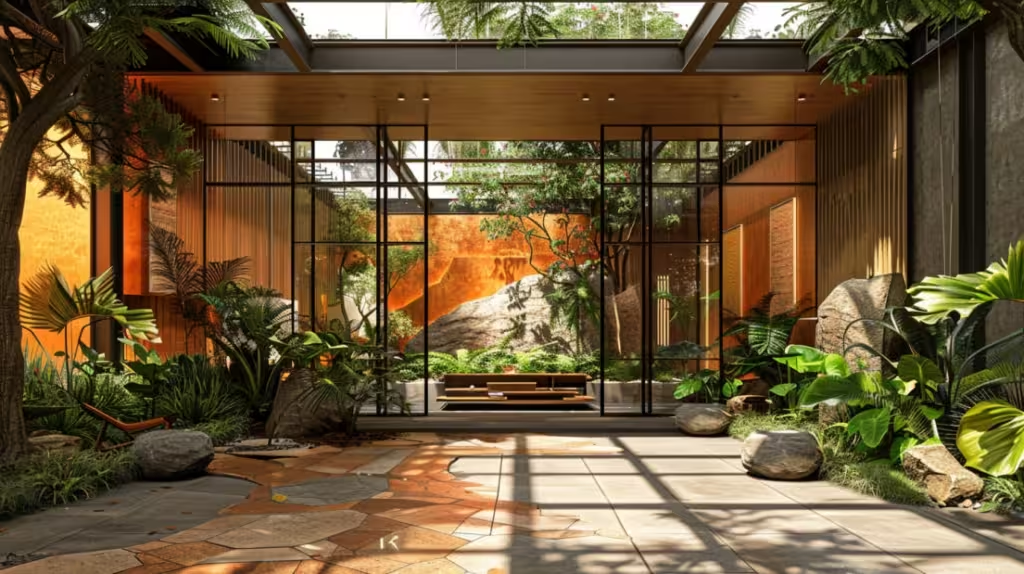
As we advance into the 21st century, sustainability in architecture and interior design is increasingly vital. In 2024, green practices are essential to modern living. This exploration highlights how sustainability shapes contemporary design, emphasizing recycled materials, energy-efficient solutions, and environmentally Friendly Design Trends techniques.
Environmental Friendly Design Trends for 2024
Repurposed Materials
A major change in sustainable design is the growing use of recycled and upcycled materials. These materials help minimize waste and reduce the need for new resources. In 2024, architects and designers are innovatively integrating recycled glass, metal, and reclaimed wood into their projects. These materials introduce distinctive textures and histories, making each design uniquely original.
Energy-Conserving Designs
Energy efficiency leads the way in sustainable architecture. Contemporary homes now feature advanced insulation, energy-efficient windows, and cutting-edge HVAC systems to lower energy use. Solar panels and green roofs are increasingly standard, offering renewable energy and enhancing building efficiency. These designs cut utility costs and reduce the carbon footprint of residential and commercial spaces.
Environmentally Friendly Construction Practices
The construction industry is undergoing a revolution in eco-friendly practices. Builders are embracing techniques that minimize environmental impact, including low-VOC paints and sustainable materials. Modular construction and prefabrication are gaining popularity for their waste reduction and efficiency benefits. Additionally, water-saving technologies like rainwater harvesting and greywater recycling are key components of modern sustainable design.
Biophilic Design
Biophilic design, which integrates natural elements into built environments, is a growing trend. This approach strengthens the bond between people and nature, boosting well-being and sustainability. Features such as indoor gardens, living walls, and abundant natural light not only foster healthier spaces but also lessen the reliance on artificial lighting and air purification.
Smart Home Technology
The adoption of smart home technology is revolutionizing sustainable living. Automated systems for lighting, heating, and cooling adjust energy use based on real-time data and user behavior. Smart appliances and home management systems boost efficiency and convenience, making eco-friendly living both practical and appealing.
Conclusion
The 2024 trends in sustainable architecture and interior design highlight an increasing dedication to environmental responsibility and innovation. By incorporating recycled materials, energy-efficient designs, eco-friendly construction methods, biophilic elements, and smart home technology, we can craft spaces that are both aesthetically pleasing and gentle on the planet.




